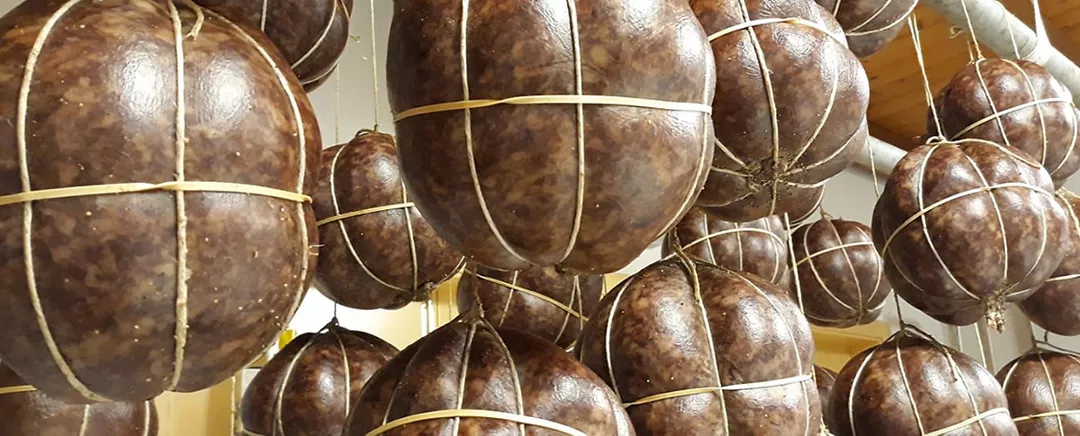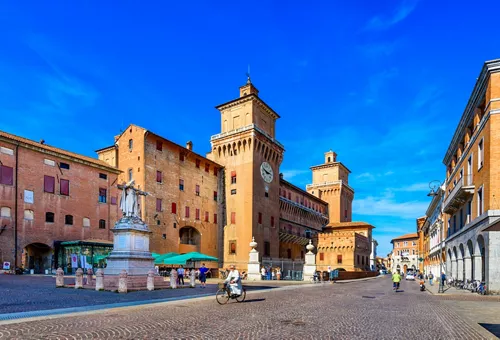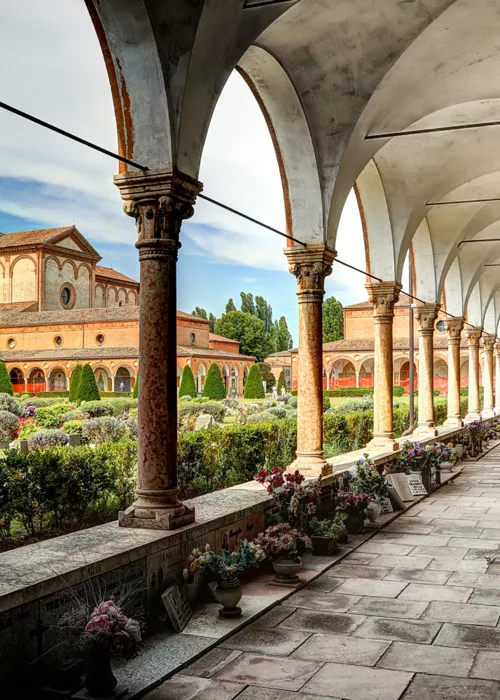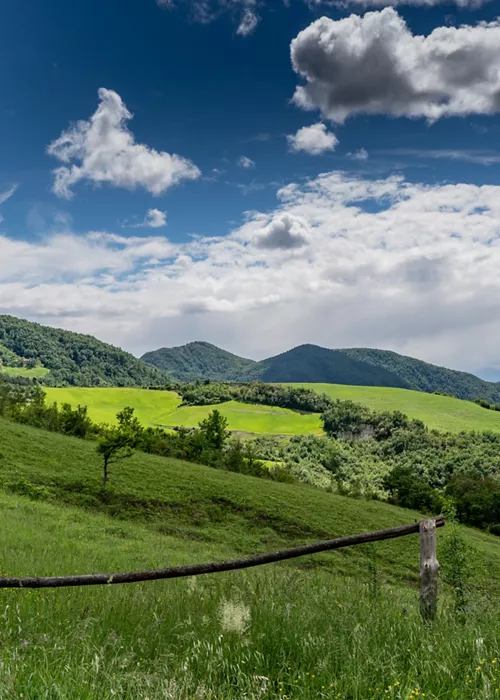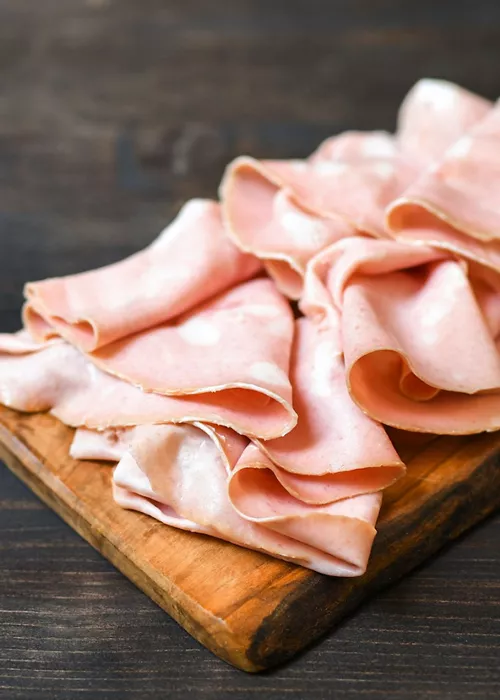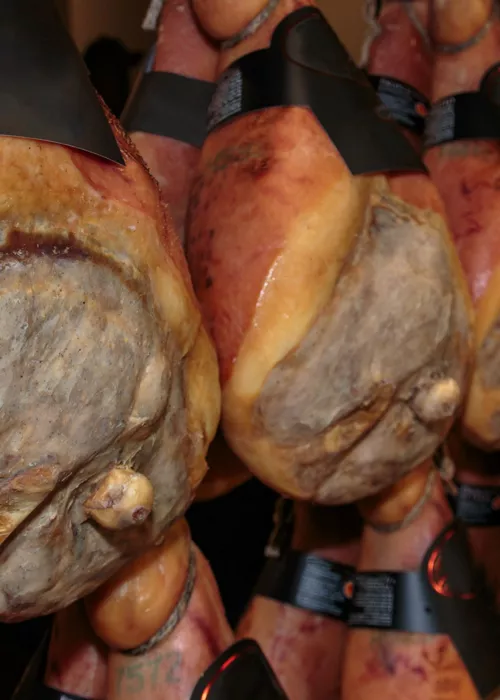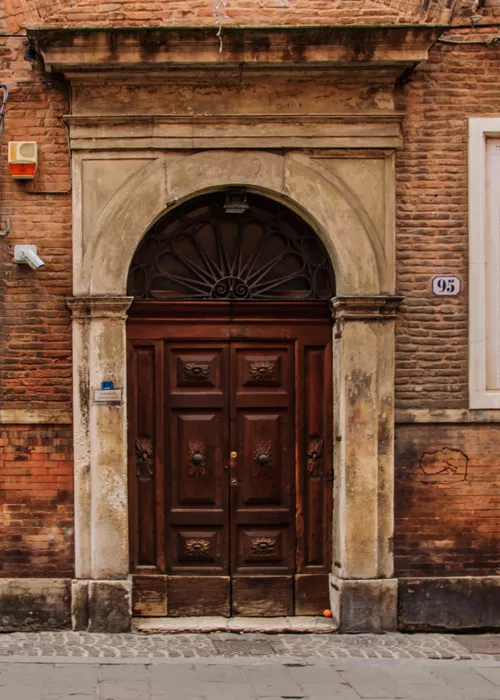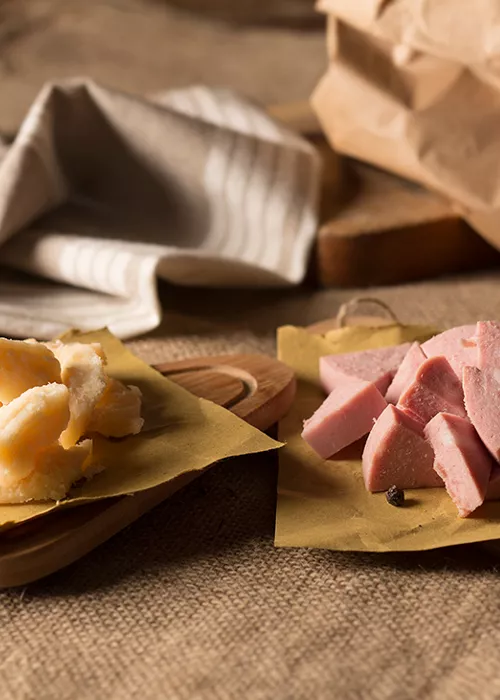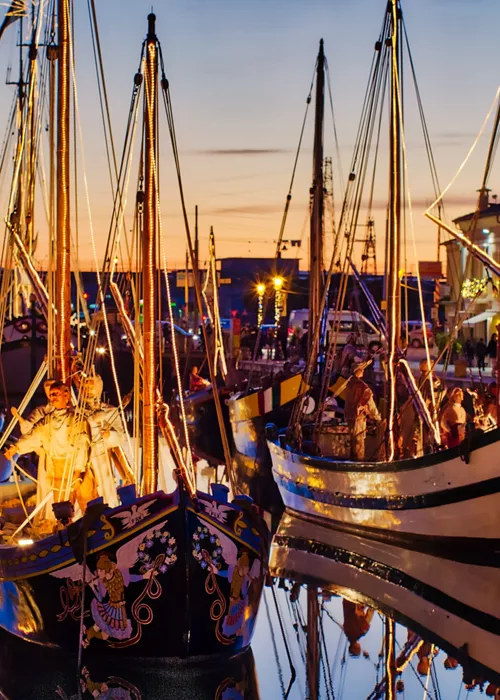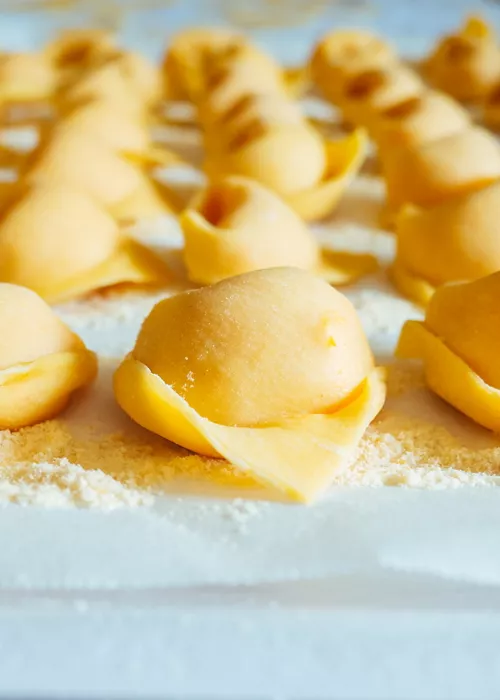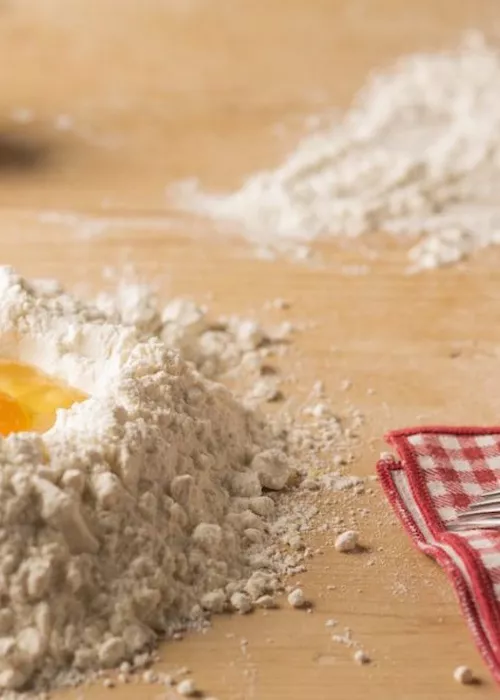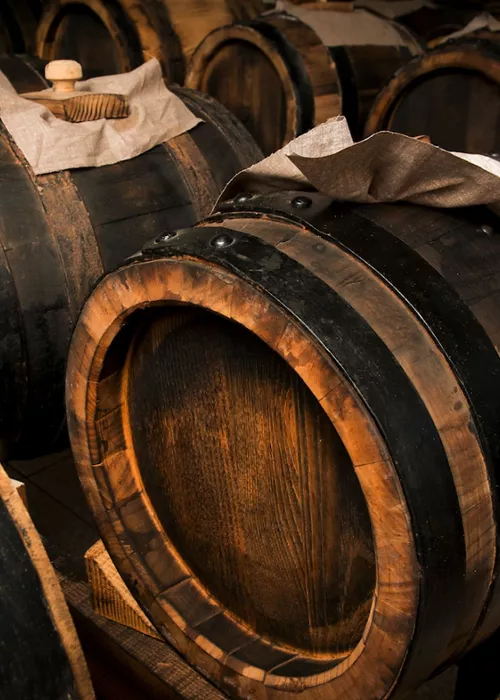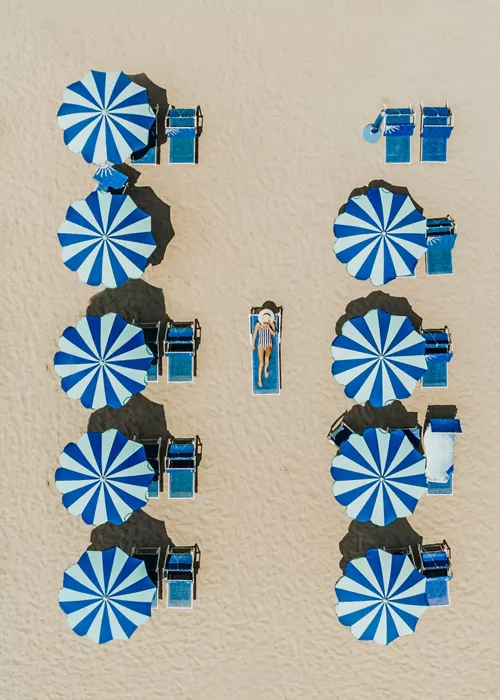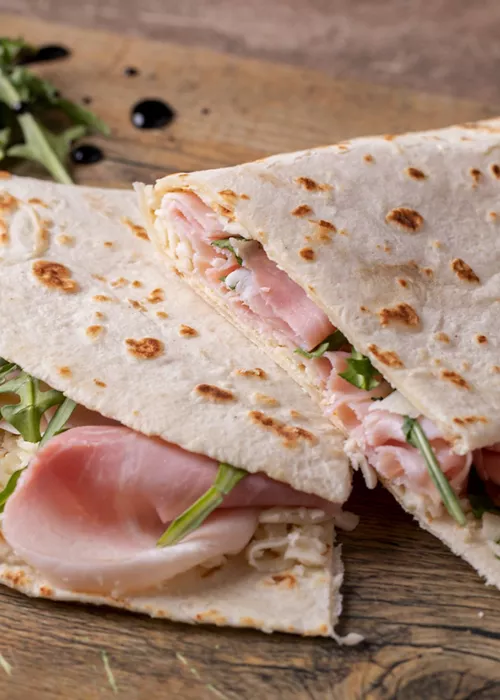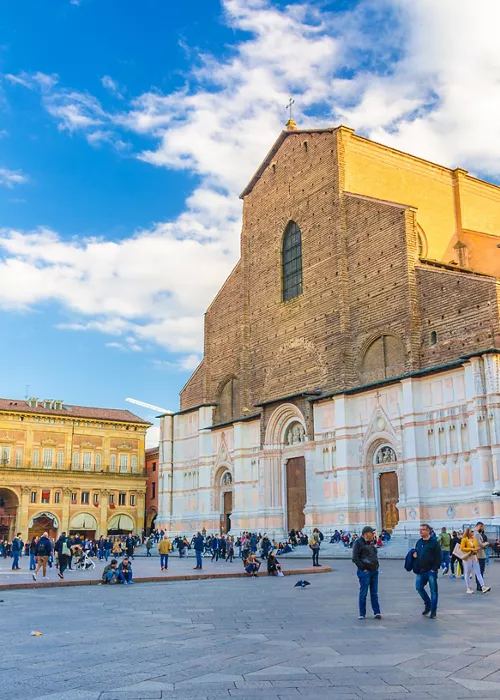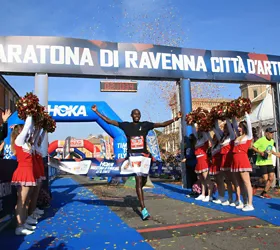Ferrara's amazing “salama da sugo”
3 minutes
From the historic Gastronomic Guide of the Italian Touring Club (1931): "A highly renowned specialty of pure Ferrara tradition, the “salama da sugo” is made from pork meat heavily spiced and sprinkled with strong aged wine. It looks like a small "mortadella". It is boiled and tasted hot, with a spoon, because when cooked it has a very soft consistency. Its flavour is spicy and vigorous, and it is a truly characteristic food, with numerous loyal enthusiasts in Ferrara and beyond". After so many years, this is still true. The only difference is that it was once a winter dish, but now it has become a treat for all seasons, both in the spoon version, typical of the “young salama", or in slices, later in the seasoning process. In the wineglass, as the Touring Club Guide itself suggests, a Fortana from Bosco Eliceo, now a DOC red wine, produced on the sandy soils of the Adriatic hinterland.
Unmistakable
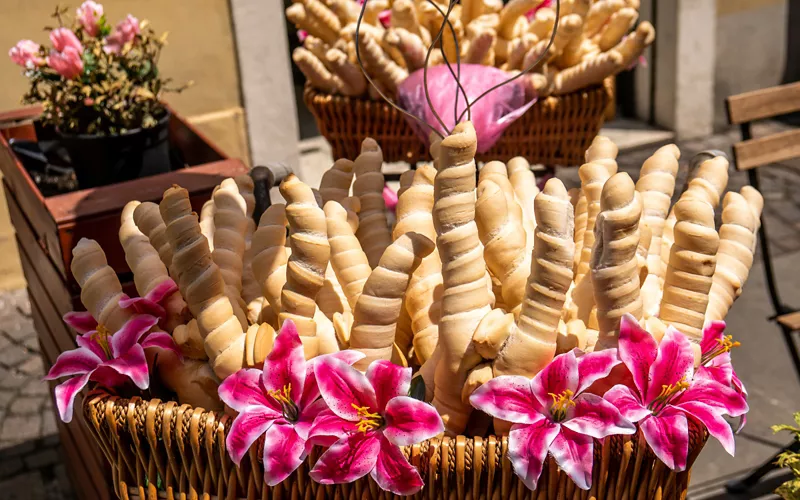
Affectionately called "salamina" in Ferrara, the “salama da sugo” is absolutely unique. Its mixture is unique: pork from different cuts - coppa, liver, tongue - finely minced and generously spiced with pepper, cloves, cinnamon, nutmeg, then macerated in red wine. Its casing is special as well: not the usual intestines, but a bladder, which gives it, once tied, a vaguely round shape. The "salama da sugo" is cooked in boiling water, wrapped in a white cloth and suspended from a wooden spoon placed across the pot, so that it does not touch the metal. After at least four hours, the “salama” reaches the cutting board intact and, when opened, reveals all its tasty contents. The usual side dish is mashed potatoes, but don't forget that Ferrara is famous for a type of bread that has no equal, the "coppia ferrarese": two rolled, pointed "horns" with a knot in the middle; soft at the heart, crispy at the ends, it is ideal for both juicy food and snacks of cheese and cured meats.
Ferrara and the surroundings area
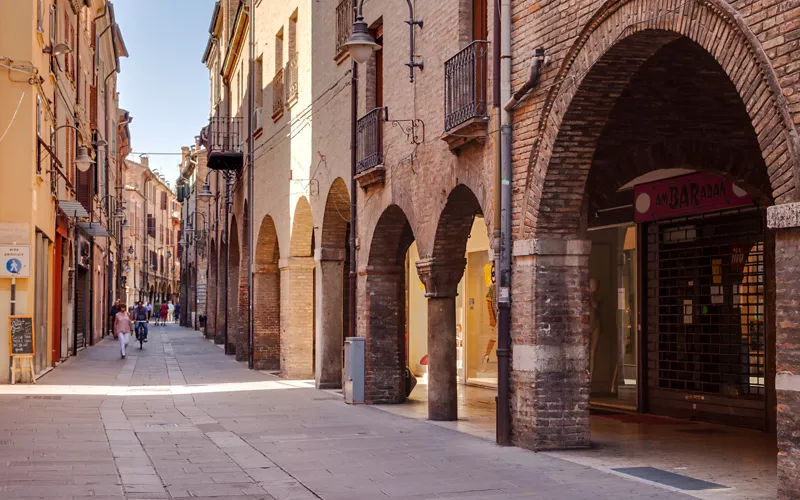
Ferrara is indeed the capital of the "salama da sugo", but it is in the countryside around Ferrara that its production has its strongholds: a number of small towns that are determined to claim primacy and supremacy and which periodically rise to the glory of local chronicles for their salami production merits. In fact, there are several festivals not to be missed. In mid-July, "La sagra della salama da sugo di Buonacompra" (the Buonacompra salami festival) and in mid-October "I giorni della salama da sugo" (The days of the salama da sugo), again in Buonacompra. Then, between late September and early October, the "Sagra della salamina da sugo al cucchiaio" (Festival of the Salamina on the spoon) held at Poggio Renatico, a locality of Madonna Boschi. There is even a half-serious "World Championship of Salama da sugo", which in the second half of February sees producers from the Ferrarese area converge in Migliarino di Fiscaglia.
Illustrious ancestors
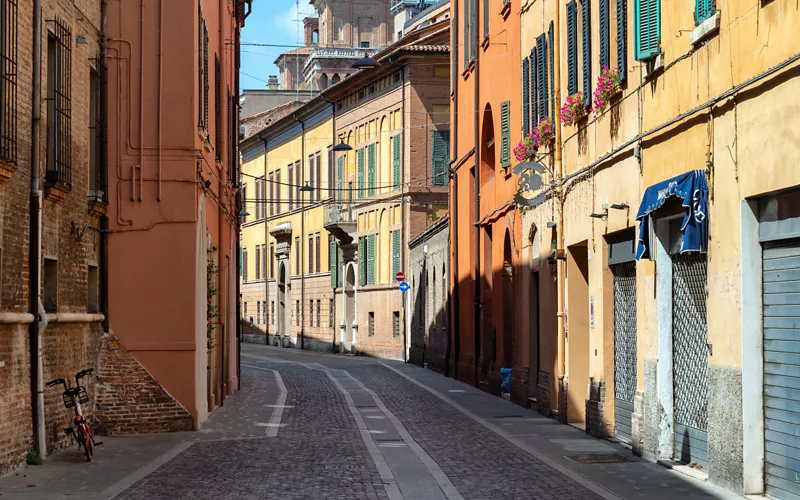
Cristoforo di Messisbugo was a "maestro cuciniere" (master chef) at the court of Alfonso I d'Este in Ferrara, at a time when a good cook could also play an important role in diplomacy. In other words, he was a master of ceremonies, capable of organizing banquets of a hundred courses, punctuated by musical interludes and other amenities, during which the fate of the continent was discussed! Appointed to the rank of Count Palatine by Emperor Charles V, Messisbugo is considered to be one of the promoters of Ferrara's affirmation among the great towns of the time. At some point in his life, he wrote a treatise ranging from the art of cooking to the art of banqueting, and dwelling, as a good Ferrara man, on the art of preparing "mortadelle di ficato (liver)" using well minced pork and liver, with salt, pepper and "vino vermiglio" (vermilion wine). From that "mortadella" descends the modern, more democratic "salama da sugo".
A literary sausage
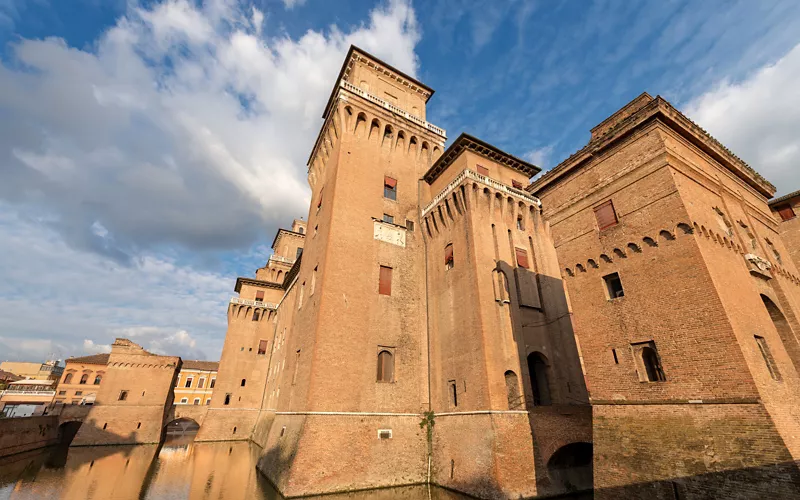
In 1772, Antonio Frizzi, a stern Ferrara magistrate, wrote a humorous poem on the merits of the pig, "La salameide". In the poem he dedicated heartfelt stanzas to the “salama da sugo”: "A juicy salama" - this is how he begins - "made by my Ferrara and not elsewhere". He then goes on to describes its contents as "soft porphyry", which is quite a bizarre oxymoron, because red porphyry was used in ancient times for columns in temples and royal sarcophagi! But the poet imagines it to be soft and dripping with "purple liquor". So delicious, that even “Maecenas, Heliogabalus, and LucuIIo”, the triad of classical gastronomy, would be stupefied.
Credit to: Discanto

